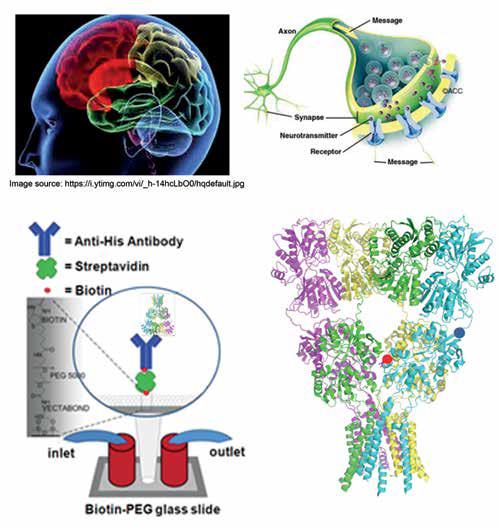
Vasanthi Jayaraman, PhD
- Professor and Chair ad interim
- John S. Dunn Chair
- Co-Director, Center for Membrane Biology
Areas of Interest
Research Interests
Structure and function of membrane proteins, Ligand gated ion channels.
Structure and function of neurotransmitter receptors
Communication between nerve cells serves as the basis of all brain activity, and one of the fundamental steps involved in signal transmission between the nerve cells, is the conversion of a “chemical” signal liberated at the end of one nerve cell, into an “electrical” signal at the second nerve cell. This step is mediated by a class of membrane bound proteins known as neurotransmitter receptors. Glutamate receptors belong to this family of proteins, and are the main excitatory receptors in the central nervous system.
Our laboratory is interested in gaining an understanding of agonist mediated activation and desensitization of this receptor by determining the structural changes in the protein induced by agonist binding. This is achieved by using various cutting edge spectroscopic methods that allow the characterization of the dynamic state structure of the proteins at a significantly higher resolution than X-ray structures. The structural changes thus determined are correlated to the functional consequences as measured by electrophysiological measurements. These investigations provide a detailed understanding of the agonist controlled function of the glutamate receptors and hence aid in the rational design of drugs targeting this group of important proteins that are involved in diverse neuropathologies, such as epilepsy and ischemia.

Chemical interactions, dynamics and function
Selected Publications
Carrillo E, Montaño Romero A, Gonzalez CU, Turcu AL, Vázquez S, Twomey EC, Jayaraman V. Memantine inhibits calcium-permeable AMPA receptors. Nat Commun. 2025 Jul 1;16(1):5576. doi: 10.1038/s41467-025-60543-5. PubMed PMID: 40593487; PubMed Central PMCID: PMC12217772.
Kumar Mondal A, Carrillo E, Jayaraman V, Twomey EC. Glutamate gating of AMPA-subtype iGluRs at physiological temperatures. Nature. 2025 May;641(8063):788-796. doi: 10.1038/s41586-025-08770-0. Epub 2025 Mar 26. PubMed PMID: 40140570; PubMed Central PMCID: PMC12074995.
Bender PA, Chakraborty S, Durham RJ, Berka V, Carrillo E, Jayaraman V. Bi-directional allosteric pathway in NMDA receptor activation and modulation. Nat Commun. 2024 Oct 13;15(1):8841. doi: 10.1038/s41467-024-53181-w. PubMed PMID: 39396999; PubMed Central PMCID: PMC11471786.
Education and Training
BS
Madras University
MS
Indian Institute of Technology
PhD
Princeton University
Postdoctoral Fellow
Cornell University
Graduate Program Affiliations
Neuroscience
Molecular and Translational Biology